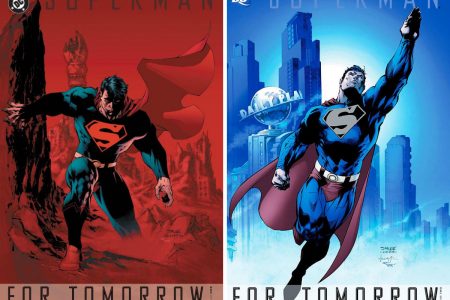Wolverine #26–32 by Mark Millar, John Romita Jr and Kaare Andrews
This collection is the second half of Millar’s run on Wolverine (the first half of which I enjoyed). It starts with the origin of the villain of the piece, Gorgon, in an effort to hype up his bad ass-ness. Then we are shown Hydra and the Hand are kidnapping, killing and resurrecting supervillains, even after SHIELD have warned them to stay in hiding. They also steal Northstar, just to balance out Millar’s killing him off in the first trade. Meanwhile, Wolverine is being deprogrammed, in a nice idea of run simulations but loses cohesion when you think about it: how can the deprogrammer be talking to Logan if they’re doing millions of simulations per second? The timescale doesn’t work out.
SHIELD are attacked by the Hand-controlled supervillains, led by Elektra and Northstar (which provides an opportunity for a great double-page spread by JRJr, as they all descend on the base). Because they are in such trouble, they release Wolverine to do his thing, which is the entire point behind the series: justify and permit the Beserker Rage by directing it in a ‘good’ way. That’s what we want, after all – ultraviolence that we can feel good about.
With Fury down and SHIELD incapacitated, Logan is out to kill as many of the bad guys as possible. Well, except for Northstar – he feels guilty for killing him in the first place. Ahh, isn’t he nice? Anyway, he has a plan: three sentinels to annihilate the rest of the bad guys, because there is only so much evisceration you can fit into six issues.
Next, Logan goes after the Hand’s secret city with a sentinel and finds Elektra in their temple with the top brass, only to discover she’s deep undercover (she’s been resurrected so many times, they can’t brainwash her anymore), and they slaughter everyone (aren’t kids comics just like when you grew up? Who says their violent?), before attacking Hydra. They’re after Gorgon, and end up fighting him (who seems to suffer no ill effects from Wolvie’s claws and Elektra’s blades), only for him to turn the tables, divining the location of Fury. Gorgon goes after him, Logan goes after Gorgon, and finally kills him by the most stupid plot twist in the book: Wolverine’s claws are able to reflect Gorgon’s Medusa stare back on him, thus turning him into stone. Sigh. So silly after all the ‘normal’ death in the book (how many people die in this story, by the way?). How does it even work? It makes no sense.
This is enjoyable blockbuster comics: Millar writes fun modern superheroics and JRJr draws big action scenes with aplomb (although I don’t particularly enjoy his style in this story, which I talked about in the my thoughts on the first trade). These issues are contrasted with the final issue, where Millar thinks he is channeling Will Eisner with a story about Logan during the second world war, where he seems to have spent a lot of time in a concentration camp. I thought Logan was doing lots of espionage/action stuff on the front; apparently, he spent it tormenting the camp commandants in a single location in Poland until they killed themselves, which seems a very slow and long-winded way to achieve positive goals. Surely, especially after the previous six issues, Logan just slaughters people with his claws? What a waste of his skills and training. This is very silly, if well illustrated by Andrews, and it is made worse by the afterword from Millar where he talks about the time he met Eisner and Eisner gave him advice on the story; the self-congratulatory nature of this leaves a bad taste in the mouth after the rest of the book.




